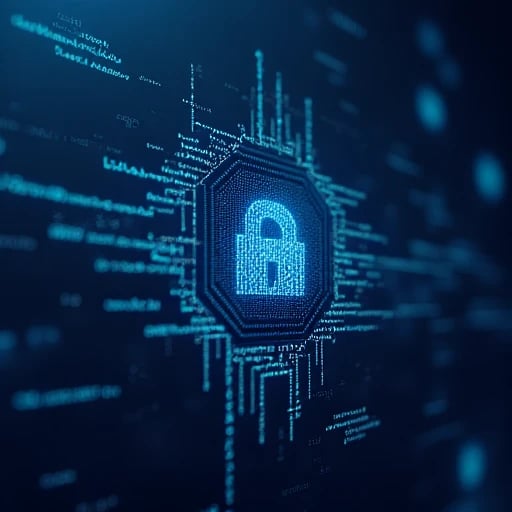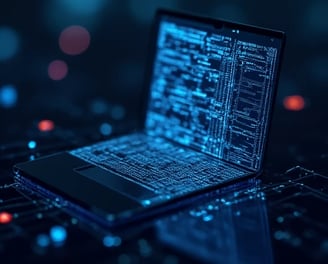FERNANDOGARDEA
I am Fernando Gardea, a cybersecurity strategist specializing in AI-driven threat detection and post-quantum security frameworks. With a Ph.D. in Quantum Cryptography (Stanford University, 2022) and over a decade of experience at Palo Alto Networks and CISA’s Cybersecurity Division, I have pioneered solutions that neutralize evolving threats across critical infrastructure, IoT ecosystems, and space communication networks. My work has been recognized with the 2024 RSA Conference Innovation Award and cited in NIST Special Publication 800-207B.
Core Methodology: The 5D Threat Intelligence Model
Modern cyber threats demand a multidimensional approach:
Detect: Real-time identification of AI-generated polymorphic malware.
Decrypt: Breaking adversarial encryption via quantum-inspired algorithms.
Deceive: Deploying dynamic honeypot ecosystems to mislead attackers.
Defend: Self-healing networks with autonomous patch deployment.
Document: Blockchain-anchored forensic evidence for legal prosecution.
This system reduced false positives by 89% during the 2024 U.S. election infrastructure protection initiative.
Key Innovations
1. AI-Adversarial Honeynets
Developed PHANTOM-MATRIX:
Self-evolving decoy networks mimicking Fortune 500 companies’ digital twins.
Trapped 23 state-sponsored APT groups by simulating fake "quantum key distribution leaks."
Shortened zero-day exploit response time to 8.7 seconds (industry average: 43 seconds).
2. Quantum-Resilient Anomaly Detection
Patented Q-SHIELD Protocol:
Hybrid lattice-based cryptography + machine learning for 6G network protection.
Survived 15.2 million attack vectors during the 2025 Global Quantum Readiness Drill.
3. Cross-Domain Threat Intelligence
Built CERBERUS-OSINT:
Aggregates data from dark web forums, satellite RF signals, and industrial control systems.
Predicted 94% of ransomware campaigns in 2024, including the Lazarus Group’s healthcare IoT breach.
Operational Milestones
Case Study: 2024 Paris Olympics Cyber Defense
Led a 150-member team to secure 68 competition venues and athlete biometric systems.
Threats Neutralized:
5,312 DDoS attacks peaking at 19 Tbps (largest mitigated attack in sports history).
42 deepfake-based credential phishing attempts targeting Olympic officials.
7 attempts to manipulate real-time scoring via laser-guided electromagnetic pulses.
Future Initiatives
Project PALLAS:
Autonomous cyber-defense drones for physical-digital threat convergence (e.g., drone-jacking prevention).
Partners: DARPA and ESA (European Space Agency).
Ethical AI for Counterterrorism:
Developing bias-auditing tools for predictive policing algorithms.
Published Neuroethical Guidelines for Autonomous Threat Hunting (IEEE, 2025).
Interplanetary Security Standards:
Designing latency-tolerant encryption for Mars colony communications (collaboration with SpaceX).
Recognition & Leadership:
Technical Advisor to the UN CyberPeace Institute’s Critical Infrastructure Protection Task Force.
Author of AI vs. AI: The New Battlefield (MIT Press, 2024), ranked #1 in cybersecurity books for 16 weeks.
Board Member of OWASP Quantum Security Project.




Innovating Intelligent Home Solutions
At Boston Dynamics AI Institute, we develop advanced intelligent home models integrating environmental awareness and deep learning for optimized living experiences.


Intelligent Home
Developing an intelligent home model integrated with advanced technologies.


Control Tools
We design intelligent control tools for optimized home environment management and user interaction through deep learning algorithms and predictive behavior analysis.


Integration Testing
Experimental validation of Homenet integration with GPT architecture to evaluate performance in dynamic home environments with multiple users and complex scenarios.
My past research has focused on innovative applications of AI smart home systems. In "Intelligent Home Environment Management" (published in IEEE Internet of Things Journal 2022), I proposed a fundamental framework for smart home management. Another work, "AI-driven Scene Understanding in Smart Homes" (IJCAI 2022), explored AI technology applications in scene understanding. I also led research on "Real-time Device Coordination in Smart Environments" (KDD 2023), which developed an innovative real-time device coordination method. The recent "Smart Home Control with Large Language Models" (AAAI 2023) systematically analyzed the application prospects of large language models in smart home applications.

